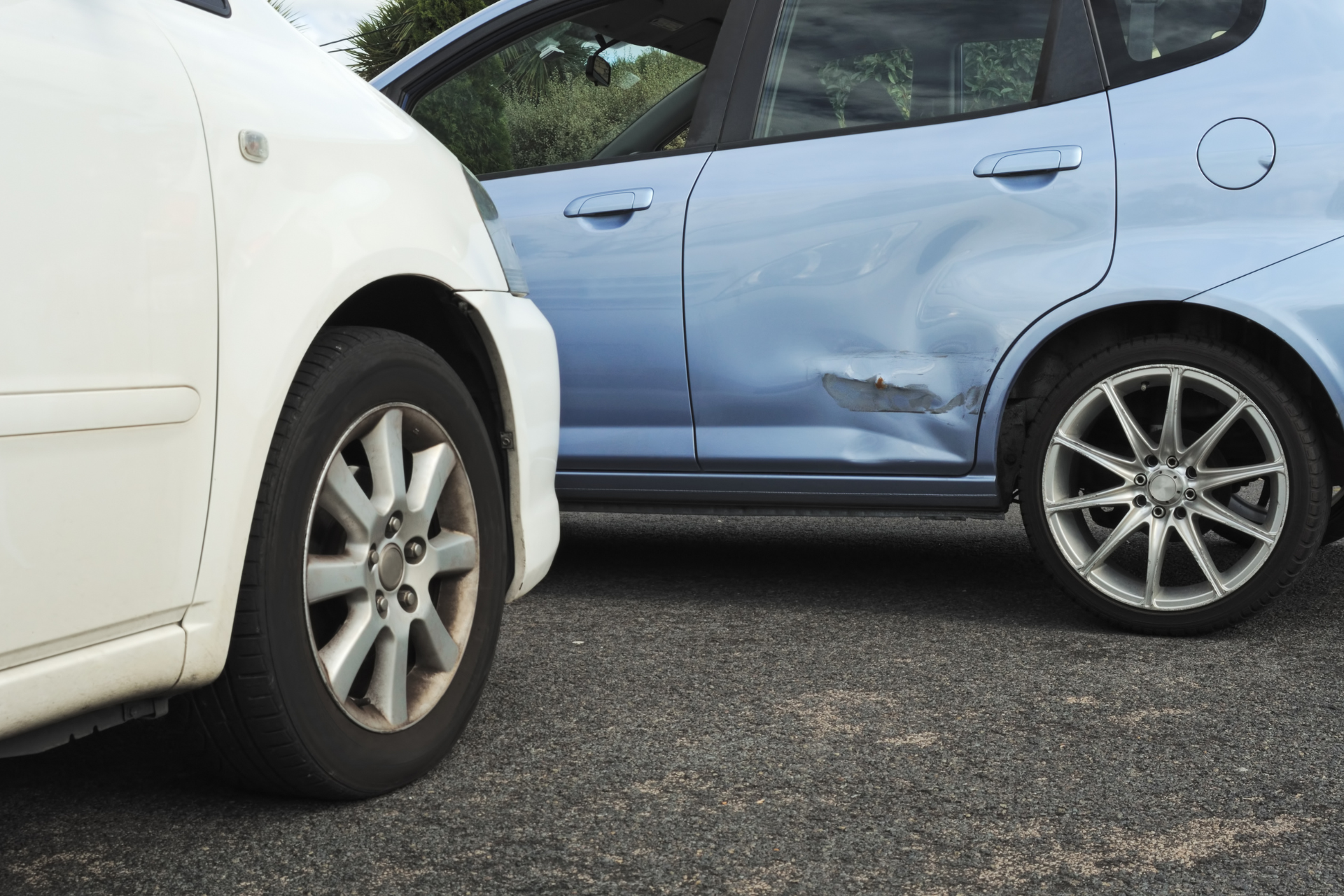Understanding Auto Coverage Limits: A Guide to Protecting Your Assets
September 14, 2023
Hello, valued readers! Today, we're diving into the world of auto insurance, specifically focusing on a vital aspect: coverage limits. Auto insurance isn't just about protecting your vehicle; it's about safeguarding your financial well-being in the event of an accident or damage. We received an insightful email discussing this topic and felt it was important to share this knowledge with you. So, let's explore what coverage limits are, and more importantly, how to determine the right coverage for you.
The Basics of Auto Coverage Limits
Coverage limits are, simply put, the maximum amount your insurance policy will pay for a covered claim. These limits can vary depending on the type of coverage and the specifics of your policy. When you're in the process of deciding on your coverage limits, you need to consider several key factors.
1. Your Vehicle's Value
The first step in understanding your coverage limits is to assess the current market value of your vehicle. The value of your car is a significant factor in determining the appropriate coverage for collision and comprehensive coverage.
If your vehicle is relatively new, expensive, or holds sentimental value, you might consider higher coverage limits to ensure that in the event of an accident, your insurance adequately covers repair or replacement costs. On the other hand, if you have an older vehicle with a lower market value, you may decide on lower limits, as it might be more cost-effective in the long run.
2. Your Risk of Liability Claims
Auto liability coverage is crucial, as it protects you in the event that you're found at fault in an accident and held responsible for damages to other parties. It's important to ensure that your liability coverage limit is sufficient to protect your assets if a substantial claim arises.
On your policy documents, you'll find liability limits expressed as three separate numbers:
- Bodily Injury per Person: This figure represents the maximum your insurance will pay per person for injuries caused by an accident you're responsible for.
- Bodily Injury per Accident: This limit shows the total amount your insurance will pay for all injuries in an accident you're at fault for.
- Property Damage per Accident: This limit indicates the maximum amount your insurance will cover for damage to someone else's property, such as their vehicle or personal property.
3. Your Budget
Last but certainly not least, your budget plays a critical role in determining your coverage limits. It's important to have sufficient coverage, but it's equally important to ensure that your insurance premiums are affordable and fit within your financial means. Balancing coverage limits with your budget is a delicate but necessary task.
Understanding auto coverage limits is an integral part of managing your auto insurance policy effectively. It's not just about protecting your vehicle; it's about safeguarding your financial security. By considering your vehicle's value, your risk of liability claims, and your budget, you can make informed decisions about your coverage limits.
We hope this information has been valuable in your quest to understand coverage limits. Should you have any questions or need assistance in adjusting or shopping for a new policy, don't hesitate to reach out to your insurance provider. Your financial well-being may depend on it, so make sure you're adequately covered and well-informed.

As we mark Life Insurance Awareness Month this September, it’s an ideal time to refresh your understanding of life insurance and the critical role it plays in securing your family's financial future. Life insurance is more than just a policy; it’s a contract that ensures your loved ones are financially protected when you're no longer around. Without life insurance, many families could face severe financial hardship. In fact, 44% of families would struggle to maintain their standard of living within just six months if their primary wage earner passed away. Having a life insurance policy in place ensures your loved ones won’t be burdened with unmanageable expenses during an already difficult time. Understanding the Basics Life insurance works by providing a death benefit to your designated beneficiaries in exchange for premium payments. This lump sum can be used to cover a variety of costs, including funeral expenses, debts, or ongoing living expenses. There are two primary types of life insurance policies to consider: Term Life Insurance: This type provides coverage for a set period, such as 10, 20, or 30 years. It’s generally more affordable and straightforward but only lasts for the designated term. Permanent Life Insurance: This type includes whole and universal life insurance, which offers coverage for your entire life. It also has a cash value component that can grow over time, though premiums are typically higher than those for term life policies. Determining the Right Coverage One of the most common questions is, "How much coverage do I need?" This depends on your unique financial situation, including your income, debts, and future financial goals. A general rule of thumb is to aim for coverage that equals 10-15 times your annual income. However, this is just a guideline—your exact needs may vary based on your circumstances. Can You Have More Than One Policy? Yes! If your financial situation changes, you can always purchase additional life insurance policies. This strategy, known as "laddering," allows you to have different policies tailored to your needs at different stages of life. Another option is to convert your term life policy into a permanent one, ensuring lifelong coverage without needing a new medical exam. Choosing and Updating Beneficiaries Naming the right beneficiaries is crucial, as they are the ones who will receive the death benefit. It’s important to review and update your beneficiaries regularly, especially after significant life events like marriage, divorce, or the birth of a child. You should also consider naming contingent beneficiaries in case the primary beneficiary cannot receive the benefit. Additionally, if your death benefit significantly increases the value of your estate, there may be estate tax implications. Consulting with a tax professional can help you navigate this potential issue. Take Action Today At Mark Price Insurance, we’re here to help you ensure your family's financial security. Whether you’re looking to buy a new policy, update an existing one, or simply have questions, our team is ready to guide you through the process. Schedule a consultation today to secure your family's future and cover your liabilities when you're gone.

At Mark Price Insurance, we understand how overwhelming a car accident can be, especially when children are involved. Preparation and knowledge can help mitigate the stress and ensure everyone's safety. Here are the essential steps to follow if you find yourself in an accident: 1. Stay Calm and Ensure Safety It's vital to remain calm to manage the situation effectively and reassure any children present. Move to a secure location off the road if possible, and ensure everyone is safe and comforted. 2. Avoid Admitting Fault Even if you believe you might be at fault, do not admit it at the scene. Limit your discussions about the accident to the police and your attorney to avoid complications later. 3. Call the Police Always call 911, even for minor accidents. A police report is crucial, especially if you are driving a partner's vehicle, as it provides an official record of the incident. 4. Gather Information Collect comprehensive details, including driver's licenses, insurance policies, and contact information of all parties involved. Take photos of the vehicles, the scene, and any visible injuries to serve as evidence. 5. Never Refuse Medical Attention Accept medical help, especially for children who might not communicate their pain effectively. A professional medical assessment ensures that no injuries go unnoticed. We hope these steps help you feel more prepared in case of an accident. For any questions or further assistance, contact Mark Price Insurance. We're here to help you navigate through challenging times.

At Mark Price Insurance, we believe in the power of proactive protection. Upgrading your liability coverage can be a game-changer in safeguarding your assets and providing peace of mind. Here are five compelling reasons why you should consider this essential upgrade: 1. Enhanced Protection for Your Assets Your assets, including your home, savings, and investments, represent years of hard work and planning. Without sufficient liability coverage, these assets could be at risk in the event of a lawsuit. For instance, if a guest slips on your property and sustains an injury, they might sue you for medical expenses and other damages. Upgrading your liability coverage ensures that your assets are protected from claims that could otherwise deplete your financial reserves. 2. Comprehensive Coverage for Common Risks Liability insurance covers a range of common scenarios, such as injuries you cause to others, injuries occurring on your property, and damages caused by your pets or children. Imagine your dog biting a visitor or your child accidentally breaking a neighbor's window—enhanced liability coverage can handle these situations, offering financial protection and peace of mind. By upgrading, you ensure that you’re covered for a broader spectrum of risks, reducing the financial impact of unexpected events. 3. Protection for High-Value Incidents Standard liability coverage might not be sufficient for high-value incidents. Consider a situation where a tree from your yard falls onto a neighbor’s house, causing extensive damage. The costs could quickly exceed the limits of a basic liability policy. Upgrading your coverage provides a higher limit, ensuring that even in the case of significant claims, your finances remain secure. 4. Legal Defense Costs Covered Legal fees can add up quickly, especially in the case of a lawsuit. Personal liability insurance not only covers the damages you’re liable for but also your legal defense costs. For example, if a delivery person slips on your icy steps and sues you, your liability insurance would cover the legal expenses, even if you’re ultimately not found liable. Upgrading your coverage means more comprehensive protection against the high costs of legal proceedings. 5. Peace of Mind with Adequate Coverage Knowing that you have sufficient liability coverage brings peace of mind. Life is unpredictable, and accidents can happen anytime, anywhere. With upgraded coverage, you can rest assured that you’re financially protected against a wide range of potential liabilities. This security allows you to focus on enjoying life without constantly worrying about what-ifs. Take Action Today Don’t leave your assets and peace of mind to chance. Upgrade your liability coverage with Mark Price Insurance to ensure you’re adequately protected against life’s uncertainties. Contact our business today to review your policy and find out how we can help you stay secure.

Umbrella insurance is often misunderstood, yet it plays a critical role in comprehensive financial planning. Many people don't realize the importance of this extra layer of liability protection until it's too late. This guide will navigate through the complex landscape of insurance, highlighting the necessity of additional liability protection to safeguard your wealth. Why Umbrella Insurance? The Protection Gap : Most homeowners and auto insurance policies offer a degree of liability coverage. However, these often aren't sufficient to cover the extreme costs of claims that can arise from lawsuits or accidents. Umbrella insurance is designed to kick in where these traditional policies reach their limits, providing an extra layer of security. Is Umbrella Insurance Worth It? Absolutely. Consider this: if you’ve worked tirelessly to accumulate your assets, it makes perfect sense to protect them comprehensively. An umbrella policy from a provider like Progressive, available through Mark Price Insurance, can cover up to $5 million—vital if you’re found liable for damages that surpass your basic insurance limits. How Does Umbrella Insurance Work? Umbrella insurance acts as an additional layer of protection that begins when your standard policy’s limits are exhausted. Whether it's a severe car accident, a mishap on your property, or even a lawsuit due to unintentional actions, umbrella insurance steps in to provide the necessary financial coverage. Scenarios Covered by Umbrella Insurance Serious Accidents: Whether on the road or water, accidents causing significant damage or injury can lead to enormous medical bills and legal fees. Incidents at Home: From a dog bite to accidental property damage, your home insurance may cover initial costs, but umbrella insurance handles severe claims that exceed those limits. Board Memberships: If you serve on a board, especially unpaid and for non-profits, umbrella insurance can protect against related lawsuits. Online and Personal Behavior: Issues such as defamation, libel, or even the actions of your children can lead to expensive lawsuits, with umbrella insurance covering legal costs and settlements. What Does Umbrella Insurance Cover? Bodily injuries Property damage Legal defense costs Certain lawsuits like defamation, slander, and invasion of privacy Incidents abroad It also covers scenarios not typically included in base policies like false arrest or wrongful eviction. What’s Not Covered? It’s important to understand what isn’t covered: Personal injuries or property damage Business losses Criminal activities Contractual liabilities Intentional harm or illegal acts How Much Coverage Do You Need? The amount of umbrella insurance should at least match your net worth, as that's what you could potentially lose in a lawsuit. Consider your future income potential, especially if you're in a field with rising earning prospects. Why Choose Mark Price Insurance? At Mark Price Insurance, we prioritize your security and peace of mind. Our dedicated team is here to help you understand your insurance needs and ensure that you have robust protection against unforeseen liabilities. Don't wait for a lawsuit to find out that you're underinsured. Take Action: Secure Your Future Today Ready to protect your assets and secure your financial future? Contact Mark Price Insurance today to discuss how umbrella insurance can be tailored to your needs. Let us help you keep your hard-earned wealth protected in a world of uncertainties. Embrace peace of mind with umbrella insurance—because it’s not just about protecting your assets; it’s about ensuring your lifestyle and your future remain intact. Call us or visit our office to find out more about how we can assist in fortifying your liability protection. Your future self will thank you.

Summer is just around the corner, and for many, this means it's time to enjoy the outdoors and embark on new adventures. Whether you’re planning to spend your days boating, jet skiing, riding ATVs, exploring in your RV, or cruising on your motorcycle, one crucial step before hitting the road or water is ensuring you have the right insurance coverage. At Mark Price Insurance, we understand the importance of peace of mind during these fun times, and we're here to guide you through securing the proper insurance for your summer "toys". Why Adequate Insurance Coverage is Essential As you prepare for your summer activities, consider these four key reasons why having the right insurance is crucial: Unpredictable Weather: Summer can bring severe storms, floods, or hail without warning. Insurance is your protective shield, ensuring that you’re covered, no matter the weather. Vulnerability to Theft and Damage: Theft, vandalism, and accidents can unexpectedly turn a great summer into a stressful one. Adequate insurance coverage means you can enjoy your summer worry-free. Home Insurance Exclusions: It’s important to note that most home insurance policies do not cover motorized vehicles. You’ll need specialized policies to ensure comprehensive protection. Financing Obligations: If you finance or lease your summer equipment, maintaining insurance is often a requirement by your lender, regardless of state laws. Specific Insurance Tips for Your Summer Equipment Each type of recreational vehicle has its own set of insurance needs. Here’s a quick guide to help you understand what might be necessary for your summer vehicles: Motorcycles: Standard home and auto policies typically do not cover motorcycles. You’ll need a specialized motorcycle policy, with premiums influenced by your bike type and driving history. ATVs: Similar to motorcycles, ATVs require specific insurance, although you might find savings by installing safety features. Boats: For boats, consider an actual cash value policy for affordability. Note that smaller watercraft might be covered under your homeowner's policy. Also, keep in mind that many boats are stolen while stored on trailers, so ensure your storage location is secure. RVs: The type of RV you own and how you use it will influence your insurance coverage. Your premiums could vary whether you use your RV for full-time living or just occasional getaways. We're Here to Help At Mark Price Insurance, we are dedicated to helping you and your loved ones enjoy a safe and secure summer. If you have any questions about insuring your summer vehicles, or if you know someone who could use our services, don't hesitate to contact us. We're here to provide the information and support you need to make the most of your summer adventures.

In this post, we're going to talk about something that may not be on your radar, but is crucial to your home insurance coverage: sewer water backup rider. At Mark Price Insurance, we believe in keeping our clients informed about all aspects of their insurance policies. So, let's dive in! Understanding Sewer Water Backup Coverage Imagine coming home to an unbearable smell only to find your basement flooded with water and, worse, raw sewage. This scenario is not just disgusting; it's a nightmare to clean up and can hit your finances hard. That's where sewer water backup coverage comes into play. It's a rider or endorsement you add to your homeowner's insurance policy designed to protect your home from the damages caused by sewage or sump pump backups. What Does It Cover? Sewer water backup coverage specifically addresses water damage to your home resulting from: Sewage backup coming from within your home's plumbing system. Water overflowing from a sump, sump pump, or related equipment. This coverage is crucial because standard homeowner’s insurance policies do not typically cover these kinds of damages. What Will It Cost You? The cost for this added protection is surprisingly affordable, with most coverage endorsements ranging from $50 to $100 annually. However, depending on the level of coverage you desire – say, if you have a large finished basement that would require more protection – the cost can be as low as $30 a year. Keep in mind, most water backup coverage riders come with a deductible, ranging from $250 to $1,000. Why Is Sewer Water Backup Coverage Important? Reports of sewer backups in homes are increasing, potentially costing homeowners between $2,000 and $10,000 in damages. This rise in incidents can be attributed to the aging infrastructure, with approximately 500,000 miles of sewer lines in the U.S. being around thirty years old. As these pipes age, the risk of experiencing a costly and unpleasant surprise increases. Distinctions From Base and Flood Coverage It's essential to distinguish sewer water backup coverage from the base coverage of your homeowner's policy and from flood coverage. While your base policy covers standard risks like fire or theft, it usually excludes sewer backup and flood damage. Similarly, flood coverage is a separate policy protecting your home from external flooding caused by weather events, not internal water backup issues. Sewer water backup coverage fills this specific gap, ensuring you're protected against a specific, prevalent risk. How to Get Covered Interested in adding sewer water backup coverage to your policy or checking if you already have it? Don't wait for a disaster to strike to find out. Getting covered is simple and affordable, and it can save you from significant financial and emotional distress. At Mark Price Insurance, we're dedicated to being a resource for you and your family, guiding you through the ins and outs of homeownership with confidence and peace of mind. If you have questions or need further information, feel free to reach out. Protecting your home from unforeseen disasters is a small investment with big returns.

In the unfortunate event of a car accident, the immediate aftermath can be chaotic and overwhelming. At Mark Price Insurance, we understand the complexities and emotional toll an accident can take, especially when children are involved. It's crucial to be prepared and know what steps to follow to ensure everyone's safety and to facilitate the process that follows. Here’s a comprehensive guide to help you navigate through this difficult time: 1. Stay Calm and Ensure Safety First and foremost, try to remain calm. This is not only important for your own well-being but is also crucial for reassuring any children present. Assess the situation; if possible, move to a safe location off the road to avoid any further accidents or injuries. 2. Avoid Admitting Fault In the heat of the moment, it's important to watch what you say. Avoid admitting fault at the scene. The determination of fault should be left to the police and your attorney. Limit your conversation about the accident strictly to factual information and avoid speculation. 3. Call the Police No matter how minor the accident may seem, calling 911 is essential. A police report can be invaluable in documenting the accident and can be crucial for insurance claims and legal purposes, especially if you are driving a partner's vehicle. 4. Gather Information Collect as much information as possible from all parties involved in the accident. This includes driver's license numbers, insurance policy details, and contact information. Also, take comprehensive photos of the vehicles involved, the accident scene, and any visible injuries. 5. Never Refuse Medical Attention It's imperative to accept medical attention at the scene, particularly for children who may not be able to articulate their pain or discomfort. A professional medical assessment is crucial for detecting and treating any injuries that might not be immediately apparent. 6. Notify Your Insurance Company Inform your insurance provider about the accident as soon as possible. Provide them with all the gathered information and cooperate fully, but remember, do not admit fault before all facts are assessed. 7. Document Everything Keep a detailed record of all conversations and correspondence related to the accident. This includes interactions with law enforcement, medical care providers, and your insurance company. 8. Stay Informed and Be Patient The process following an accident, from insurance claims to legal proceedings, can be lengthy. Stay informed about the progress of your case and be patient. Ensure you have all the necessary documentation and support to facilitate the process. While we all hope never to be involved in a car accident, being prepared can significantly mitigate the stress and confusion that follows. At Mark Price Insurance, we're committed to providing support and guidance to our clients through all of life's unexpected events. For more tips and advice, follow and like our social media accounts. Stay safe, and remember, we're here to help.

In today’s fast-paced world, planning for the future is more important than ever, especially when it comes to life insurance. While it might seem like a concern for a later stage in life, starting young has its unique advantages. Mark Price Insurance, with its vast experience in providing tailored insurance solutions, emphasizes the significance of early investment in life insurance. The Early Bird Advantages: Lower Premiums: Starting young typically means lower premiums because insurers view younger individuals as lower risk. Health Benefits: Getting insured when you're healthy helps avoid future complications or exclusions due to developed health conditions. Long-Term Financial Planning: Early investment in life insurance is a cornerstone of a robust financial plan. Peace of Mind: Knowing you’re covered can provide immense peace of mind for you and your loved ones. Building Cash Value: Some life insurance policies can accumulate cash value over time, which can be a financial resource later in life. Why Mark Price Insurance? Choosing the right insurance partner is crucial. Mark Price Insurance, with its dedicated team and customer-centric approach, ensures that you receive a policy that aligns perfectly with your life goals and financial plans. The Long-Term Perspective: Investing in life insurance at a young age is not just about covering risks; it's about making a wise long-term financial decision. It's about ensuring that as you grow older and your responsibilities increase, you have a safety net that grows with you. : Life insurance is not just for the later stages of life; it's a strategic financial tool that young adults should consider. With Mark Price Insurance, embark on a journey towards financial security from an early age. Visit markpriceinsurance.com to learn more and start this important conversation today.

Hey there, fellow Hoosiers! With the winter chill creeping in, it's time to gear up and prep our homes for the colder months ahead. As the temperatures drop, our cozy abodes might need a little extra care to keep them warm, snug, and protected. To help you winter-proof your haven, here are some vital tips and tricks to ensure your home remains a warm and secure retreat this season: 1. Seal the Gaps: Cold air can be sneaky, finding its way into your home through tiny gaps around doors and windows. Inspect these areas and consider weatherstripping or caulking to seal any openings. If you need guidance, resources like Lowes offer excellent DIY guides for this purpose. 2. Window Sheet Kits: For windows without double-panels or storm protection, consider using plastic-film sheet kits available at local hardware stores. These kits are designed for single-season use and work wonders in enhancing energy efficiency while keeping those wintry drafts at bay. 3. Gutter TLC: Clear out gutters and downspouts from any debris like leaves or twigs. Clogged gutters can cause drainage issues, potentially damaging your roof and leading to troublesome leaks. 4. Outdoor Faucet Winterization: Before the freeze sets in, disconnect hoses or devices from outdoor spigots and drain any residual water from the pipes. Don't forget to turn off the water supply to outdoor spigots to prevent pipe damage if freezing occurs. 5. Amp Up Home Security: With longer nights, ensure your home is well-lit and secure. Test outdoor lights, replace bulbs as needed, and consider installing motion-sensor lights to deter unwanted visitors. Also, it's a great time to reassess your home security system for reliability. 6. Fireplace and Chimney Check: Wood-burning fireplaces add warmth and charm, but they require maintenance. Get your chimneys inspected to prevent chimney fires and the risk of carbon monoxide poisoning. Find a certified chimney sweep to ensure safety. As we gear up for the coldest months of the year, remember to share these tips with friends and family. If you have any questions or need assistance, don't hesitate to reach out. Ensuring your home is winter-ready is crucial, and we're here to help you every step of the way. Stay warm, stay safe, and embrace the cozy vibes of the season!

